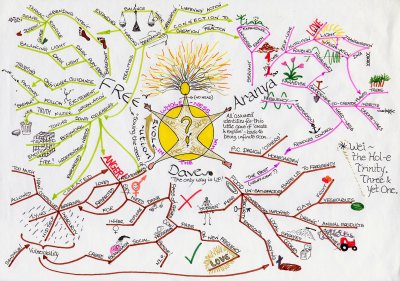David Brooks, at The New York Times, wrote an intriguing editorial “The Campus Tsunami” (May 3, 2012) that provoked a lot of thinking on my part. Regardless of what I write here, be sure to read his article. It will be well worth your time.
What I do below is simply list a series of short quotes from his article followed by my reactions to each. As always, I am writing this as a long-time professor (though one not in any type of leadership position; these are simply my thoughts and do not reflect any “official” position) at the Michigan Ross School of Business.
The elite, pace-setting universities have embraced the Internet. Not long ago, online courses were interesting experiments. Now online activity is at the core of how these schools envision their futures.
This isn’t quite what it feels like from my position. From my office at Ross I feel like UM’s recent move with Coursera is happening at a place far, far away. Maybe it is entirely true that online activity is at the core of how UM envisions its future, but I can’t see it from down here in the weeds. (Not that anyone should tell me or anything; I’m just reporting what I see.) We are moving slowly and cautiously. I have hope that we’ll do something more soon, but I haven’t seen it yet.
What happened to the newspaper and magazine business is about to happen to higher education: a rescrambling around the Web.
Yes, yes, yes! Certainly, we have heard these proclamations before (Fathom comes to mind), but this time it feels like there’s more meat on these bones. With its OpenCourseWare, MIT has now been in this game for a decade. edX is a collaboration between Harvard and MIT in which they plan to “collaborate to enhance campus-based teaching and learning and build a global community of online learners.” The University of North Carolina now offers a fully online MBA program whose tuition is essentially equivalent to their in-person, on-site MBA.
Yes, stuff is definitely happening, and I don’t see it slowing down. It is going to change how the public and how the government view the concept of education and will change what they’re willing to pay for (and how much they’re willing to pay). Just like newspapers, we need to figure out what our revenue model is going to be and what expenditures we are willing to support, and these decisions better be right or we might find ourselves on the wrong side of the AOL/Google divide.
Will online learning diminish the face-to-face community that is the heart of the college experience?
I don’t think these are necessarily contradictory notions. I don’t see why online learning couldn’t coexist with face-to-face community in a traditional college. Here’s a couple of thoughts. Teach some classes using purely online learning to students on your own campus. Why? To reduce the number of classrooms needed, to increase the number of students who can take any particular class, to increase the number of classes you can offer at popular times. At the same time, continue to offer other face-to-face classes and other traditional college extra-curricular activities. If these are seen as providing a significant-enough value, then students will be able to justify the expenditure of attending a traditional college experience. I have lots more to say about this point, but I’ll stop for now.
On a related point, the unstated (and, by me anyway, inferred) question here is “Does online learning provide an inferior education to the face-to-face learning currently provided in the typical college experience?” Your answer to this question depends on how you think about education and what you think education is. I’m not sure that face-to-face learning is the what of education — it might currently be, and might have been (for the last several millenia), defined by this type of learning; alternatively, it might simply be the how of traditional education. Yes, people are wired fairly well to pick up on physical clues, tonal clues, and all sorts of implied communication when we are physically in the same room when we are communicating. On the other hand, I think technology is getting close to good enough (and might actually be there) so that taking an online class from an excellent professor would be superior to taking a traditional, face-to-face class from the average professor. It’s certainly something to think about (and experiment with). I think this points us in the direction of exploring online learning so that we can figure out how to do it better.
If a few star professors can lecture to millions, what happens to the rest of the faculty?
It’s pretty obvious, isn’t it? What happened to newsrooms in the last ten years? What has happened to corporate organizational structures over the last twenty years? Lots and lots of people in positions that were not rewarded by the market lost their jobs. Professors at MRFIHLs (major research-focused institute of higher learning) bring in revenue in two significant ways — first, by teaching classes with tuition-paying students, and second, by bringing in grant money from corporations or foundations. Many details are not clear, but it seems apparent to me that, as both direct state appropriations and tuition support programs continue to shrink, MRFIHLs are going to have to strategically reduce faculty. (As I have said before, I have more to say here but this post is already too long as it is.)
Will academic standards be as rigorous?
I don’t see why it wouldn’t be the case that some places have rigorous academic standards, and other places have almost no academic standards, with many others falling in-between the two extremes. Not much different than the current situation.
What happens to the students who don’t have enough intrinsic motivation to stay glued to their laptop hour after hour?
What happens to students at a traditional school who don’t have enough intrinsic motivation to go to class or to pay attention when in their class? Online learning is not a panacea for poorly prepared or minimally motivated students — it requires a different type of discipline but does not remove the need for it entirely.
Online learning could extend the influence of American universities around the world.
This is absolutely true. It is an amazing opportunity. This is why we should be excited about the new opportunity for extending our reach and effect on the world. Yes, it will be painful in the short term and require all of us to change our skill sets and comfort zones; however, the alternative is obsolescence or irrelevance.
Research into online learning suggests that it is roughly as effective as classroom learning. It’s easier to tailor a learning experience to an individual student’s pace and preferences.
These are seriously important questions: What types of teaching and learning can be most effective for online learning, and what absolutely depends on in-person and face-to-face experiences? Also, what types of information needs to be captured in order to create a personally-tailored learning experience that is most effective? These are significant areas for research, some of which will be generally available for public consumption, and some of which will be kept confidential for competitive reasons. MRFIHLs need to start addressing these now, or they risk being left on the sidelines as the global education market evolves.
People learn from people they love and remember the things that arouse emotion. If you think about how learning actually happens, you can discern many different processes. There is absorbing information. There is reflecting upon information as you reread it and think about it. There is scrambling information as you test it in discussion or try to mesh it with contradictory information. Finally there is synthesis, as you try to organize what you have learned into an argument or a paper.
For the “arouse emotion” comment: yes, yes, yes! I work very hard at this when I am teaching a face-to-face class. I want the students excited about something — anything — because I know that the engagement itself will help them both remember the material and feel better about the time spent in class. The question becomes “how can a professor do this when teaching an online class?” Well, I would think film, performance, and media studies would have a lot to say about this as well as studies of pedagogy.
As for the rest of the above paragraph (that is, the different processes), I think a question facing those who want to provide online education is “how can a professor enable or encourage or, even, recognize the appropriate time for these other processes?” The organization that can figure this out and apply it appropriately will have a leg up on teaching a wider variety of classes more effectively.
Well, that’s it for now. I know that the above is a lot to absorb, but Brooks’s article provided a lot stimulus. Let me know if you have any thoughts or reactions based on the above.










